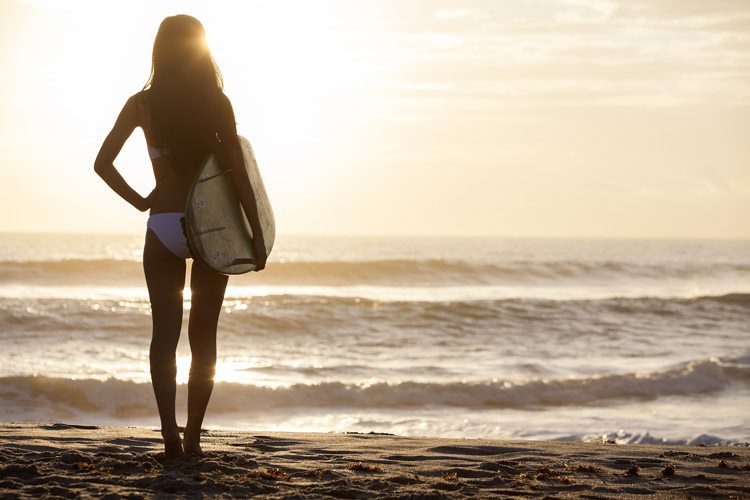Tides affect surfing. But remember rule number one: there's no best tide in surfing. Surf breaks may have tide patterns that work better in a particular period, but the general rule of thumb is that it is possible to catch waves in both low and high tides.
We also know that the interactions between swell, wind, bathymetry, and tides are key to quality surfing.
If a local reef or sandbars work cooperatively with the shifting elements, you'll enjoy excellent waves.
However, tides deserve more attention from surfers.
Most times, wave fanatics miscalculate the right time to paddle out and end up getting the worst rides for a long period of time, i.e., closeouts and shore-breaking waves.
All surfers have made this mistake, particularly in regions of the world under the semi-diurnal tide pattern and during spring tides (exceptionally high and low tides).
They watch waves breaking out the back; they put their wetsuits on, and off they go.
Three Examples
Tidal cycles are a critical variable in surfing. Watch the illustration below.
If your local beach break is experiencing a super low tide (0.3 meters, or one foot) at 10:52 am, and you decide to paddle out at 10:36 am, the chances of getting multiple closeouts are dramatically higher.
You'll have to wait at least two hours before catching decent wave faces.

In the second example, you're under the full moon (spring tide) in the middle of an incoming tide.
If you're surfing for an hour, you've timed it well, and you'll still enjoy at least one more hour of quality waves.
In the third example, the surf watch indicates the start of the outgoing tide under neap tide conditions.
Waves are probably breaking a bit near the shore, and/or they may never break unless a relevant groundswell hits the coast.
Wait two hours before putting the wetsuit on.
Managing the Rule of Twelfths
One of the most interesting and useful guidelines for surfers is the "Rule of Twelfths."
It tells us that, in semidiurnal tide conditions and the first hours, the tide will not rise/fall so much.
So if you keep in mind that the period between high and low tides (and vice-versa) is roughly six hours and 13 minutes, you'll only notice drastic water level changes between the third and fifth hours of each tide.
And if the super low tide reaches its lowest level at 10:52 am, it might be good to wait before paddling out. Say 12:52 pm.
Fifty percent of the tidal run is completed in only two hours (3rd-5th).
The same rule applies in the opposite case when the tide is going out.
It's fair to say that most surf spots don't do well under super low and high tide conditions because they'll probably deliver powerful closeouts and fat mushy waves, respectively.
But there's nothing better than observation. You'll learn the patterns of your home break and, ultimately, surf more and better.
Discover the best surf forecasting books.
